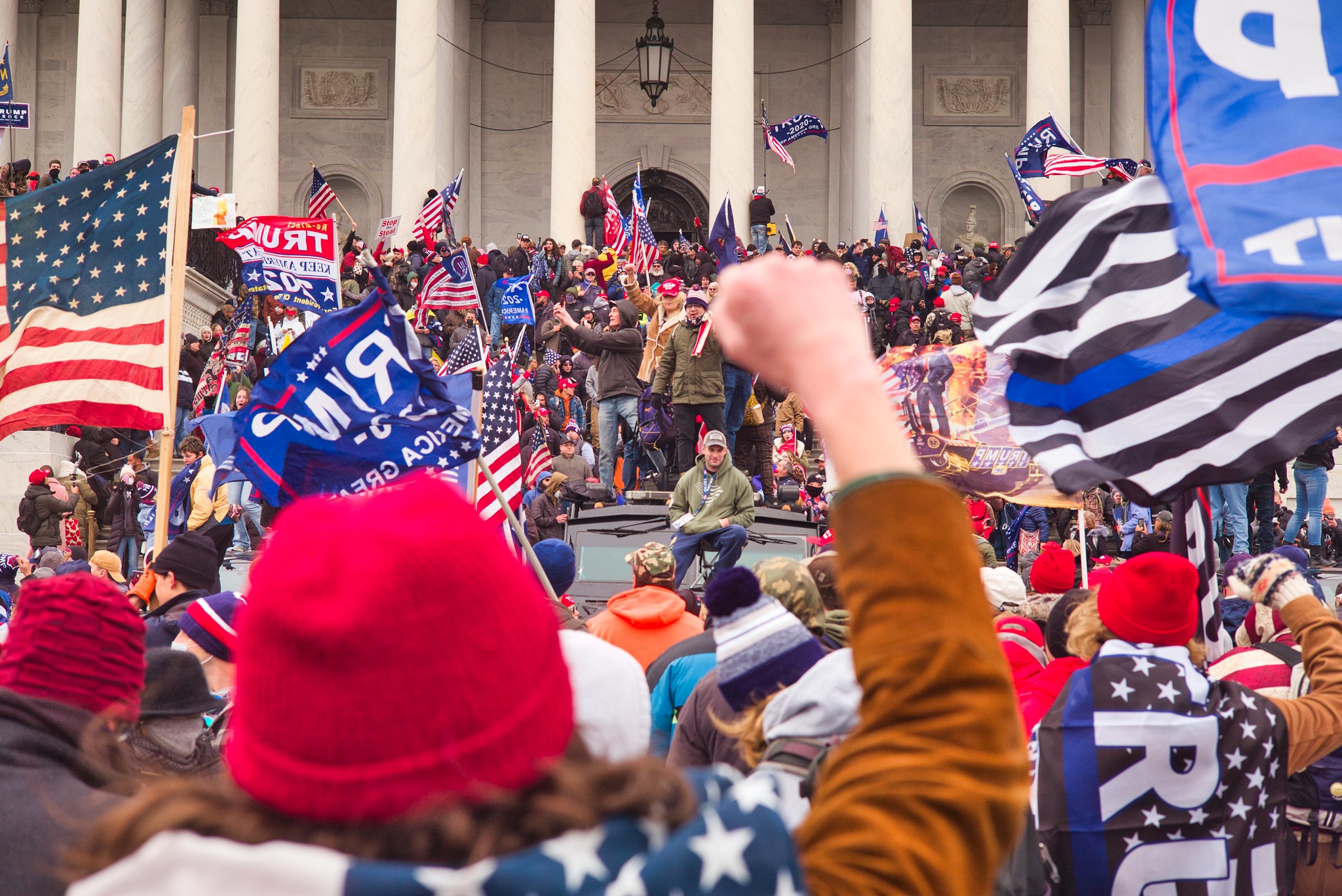Yesterday in <em>U.S. v. Tsarnaev</em>: Opening Statements
After weeks of protracted and highly contested jury selection, opening statements in the capital case against Dzhokhar Tsarnaev got underway yesterday, more than one month later than originally planned. I attended this part of the Boston bomber’s trial---which I summarize below.
The defendant appeared at ease when he entered the courtroom, even cracking a smile or two with one of his attorneys, Miriam Conrad. Judge O’Toole began by ruling on some last minute motions, including the prosecution’s motion to exclude mitigating evidence.
Published by The Lawfare Institute
in Cooperation With

After weeks of protracted and highly contested jury selection, opening statements in the capital case against Dzhokhar Tsarnaev got underway yesterday, more than one month later than originally planned. I attended this part of the Boston bomber’s trial---which I summarize below.
The defendant appeared at ease when he entered the courtroom, even cracking a smile or two with one of his attorneys, Miriam Conrad. Judge O’Toole began by ruling on some last minute motions, including the prosecution’s motion to exclude mitigating evidence. Although granting the motion, Judge O’Toole acknowledged that admitting some evidence relating to Tamerlan Tsarnaev, Dzhokhar’s now dead older brother, would be unavoidable, especially given the nature of the multiple conspiracy charges against Tsarnaev.
The Prosecution’s Opening
Opening statements then began. Lead prosecutor William Weinreb took the podium, painting a vivid scene of the 2013 Boston Marathon. What started out festive and celebratory, he described, quickly turned grisly and gory. As shrapnel flew from pressure cooker bombs Tamerlan and Dzhokhar Tsarnaev detonated near the finish line---tearing through bodies and shredding flesh---three lives were claimed, hundreds injured, and countless more indelibly impacted. Those killed by the bombing: Eight-year-old Martin Richard, who was watching the marathon with his family at the railing behind which Dzhokhar Tsarnaev dropped off one of the pressure cooker bombs, as well as graduate student Lingzi Lu and restaurant manager Krystle Campbell.
Weinreb then described how a mere twenty minutes after the bombs went off, as the marathon participants and spectators scrambled to help those injured, security cameras at a Whole Foods in Cambridge captured Dzhokhar Tsarnaev purchasing some milk---and even returning to exchange his purchase for a different kind of milk. His seemingly calm demeanor immediately following the bombings, Weinreb stressed, was indicative of and consistent with Tsarnaev’s motives for the attacks, as he himself described them from inside the boat in which he hid after the Watertown shootout. Reading from the writings found inside the boat, Weinreb portrayed Tsarnaev as asking Allah to make him a martyr for avenging the crimes the United States government committed against Muslim civilians.
As Weinreb worked his way through the events that took place over the next several days, he mentioned key witnesses that the prosecution would call to the stand. One is Dzhokhar Tsarnaev’s friend from high school, who Tsarnaev asked to purchase a gun that Weinreb alleged was later used in the killing of MIT police officer Sean Collier. Another is an MIT graduate student, who will testify he was riding his bike near campus when he saw Tsarnaev at Collier’s vehicle around the time of the shooting. And third is the young Chinese man, heretofore known only as “Danny,” who was the victim of the Tsarnaev brothers’ carjacking shortly after the killing of Collier.
Anticipating the defense’s theme of the heavy influence Tamerlan played in the younger Tsarnaev’s radicalization, Weinreb carefully detailed the role Tsarnaev played during the Watertown shootout. As multiple police officers struggled to physically incapacitate Tamerlan in the middle of a quiet residential street in Watertown, Tsarnaev got behind the wheel of the carjacked vehicle and charged at Tamerlan and the officers. The officers jumped out of the way at the last moment; Tamerlan did not. Tsarnaev ran right over his brother and dragged his body about fifty feet. Weinreb let that sink in with the jury: It was Tsarnaev who killed his brother.
Weinreb closed by referring back to the images with which he opened: eight-year-old Martin Richard, graduate student Lingzi Lu, restaurant manager Krystle Campbell, and MIT police officer Sean Collier. All of them dead, Weinreb stressed, because Tsarnaev believed that America needed to be punished.
The Defense’s Opening
High-profile criminal defense attorney Judy Clarke then opened for the defense. Right off the bat, Clarke acknowledged the tragic and devastating nature of the events that began on Marathon Monday in 2013 and culminated in the Watertown shootout several days later. The acts by the two brothers were senseless and horribly misguided, she emphasized, the consequences of those acts unbearable grief and pain. As to whether Tsarnaev committed the acts, Clarke left no room for equivocation. “It was him.”
But while the defense would not sidestep Tsarnaev’s responsibility for the acts, Clarke urged the jury to keep in mind the question why Tsarnaev did what he did. That, Clarke emphasized, is where the prosecution and defense fundamentally disagree.
And so Clarke proceeded to sketch a very different portrait of Tsarnaev than the prosecution’s image of an independently acting, self-radicalized terrorist. It was Tamerlan who became obsessed with the cause, Tamerlan who self-radicalized, Tamerlan who purchased the key physical implements that would later become the bombs the two brothers used, Tamerlan who shot the MIT police officer Sean Collier. Make no mistake, Tsarnaev’s computer contained copies of terrorist-affiliated magazines complete with instructions on how to build pressure cooker bombs to be set off in crowded areas. But Clarke argued that there was no evidence that Tsarnaev himself scoured the internet for those materials. On the contrary, the evidence indicates that the materials came from a thumb drive that, other indications would seem to suggest, was used primarily by Tamerlan. What is the source of the material, where did it come from, and who put it there, Clarke asked. The thumb drive thus seemed to serve as a metaphor of the relationship between the two brothers Clarke sought to highlight: Tamerlan was the source of the ideas, Tsarnaev a mere recipient.
Indeed, Clarke went on, the evidence will show that while Tamerlan fixated on death and destruction, Tsarnaev was mostly occupied with thoughts of a normal teenager---friends, school, girls. Over multiple objections by the prosecution, Clarke then described how during the period leading up to the bombing, Tsarnaev was in an exceedingly vulnerable mental state: His parents had left for Russia, and his grades were plummeting. In these distressing conditions, the younger Tsarnaev was particularly susceptible to Tamerlan drawing him into radical passion. The writings found in the boat were not so much an indication of Tsarnaev’s individual quest for martyrdom, Clarke contended, but rather an expression of jealousy that his older brother had achieved martyrdom and desire to follow in his older brother’s steps. Closing, Clarke implored jurors to hold their minds and hearts open.
And with that, the prosecution turned to its case.
Jodie C. Liu formerly researched national security issues at the Brookings Institution as a Ford Foundation Law School Fellow and has worked at the Open Society Foundations in Budapest, Hungary. She graduated magna cum laude from Harvard Law School in 2015 and summa cum laude from Columbia College in 2012, with honors in economics.




.jpg?sfvrsn=d5e57b75_5)
